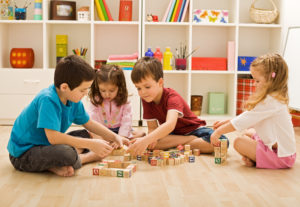Does Your Child Get Anxious? Tell a Social Story!

If your child becomes anxious with new or unknown events or people, or is overly stimulated in new places, you'll want to know about Social Stories.
Children with ADHD and related challenges often struggle in new situations more than any other time. Children who are hyperactive or have attention problems in a general setting may find themselves completely overwhelmed in new settings, with many new objects and people to explore.
Sometimes a little preparation can help a child in a large way. “Social Stories,” originally created to help prepare individuals with autism for social interactions, have expanded to help all children transition easier into environments that might initially be a struggle for them. And they are particularly effective for children with ADHD.
While social stories are a tool often used by special education teachers, they can be just as effective for caring parents who want to prepare their children for new and different experiences. A Social Story is written to give a picture of what will occur and create a vision around how a child can handle a new situation.
You Have The Tools You'll Need to Make a Social Story Already
(NOTE: Writing Experience NOT necessary):
- Camera
- Some way to print pictures
- Folder or a binder
A social story is usually written from a child's perspective, so she can internalize the meaning. There are 4 simple steps for you to take:
- Decide on the purpose of your social story. Do you want to prepare a child for a new place? Do you want to prepare a child for a behavior expectation? If you could model the appropriate behavior or share pictures of the place, then a social story will work.
- Think about the experience from the child's perspective. What will happen first? What will he see first? How will he want to act? How should he act? What is the end result?
- Choose your format. Social stories can be written as books or they can be written as one page stories. I tend to make mine with one sentence and one picture on a page. I put them in a portfolio folder for easy use with children.
- Begin writing from the perspective of your child. Simply walk through the actions and feelings of a child in the situation, and use pictures to make it clear what your child might expect, and ultimately, what you expect from your child. Make sure that your child is the “narrator” of the story.
A social story should be short and sweet, and can easily be taken anywhere and referred to at any time. For example, when preparing your child for attending a wedding, you might create a social story like this (with pictures—don't forget the pictures!):
“I am going to a wedding. I will see lots of people and hear quiet music. I must walk in and sit quietly. Two people will get married up front, and others will stand by them. I can hold a quiet fidget, but I cannot make a sound. I will talk to people when it is done.”
With this story to frame a context for understanding, your child can internalize what is expected of her during the upcoming wedding and be better prepared.
Social Stories Themselves Are Not Complex
While there are many examples of social stories online that can be found with a simple search, I encourage you to use them as a starting point. Personalizing the story to your child will have a greater impact. You know how your child reacts in different situations and can use that information to make a much more effective social story than you can find online.
Whether you enjoy writing or not, social stories are great resources to help children deal with new situations. When you are a little proactive in preparing your child with a social story, you can help your child in a big way!
Minimize Meltdowns
Is there more yelling in your house than you'd like? You just want your child (or spouse) to learn self control! This online course teaches you step by step how to manage emotional intensity.

